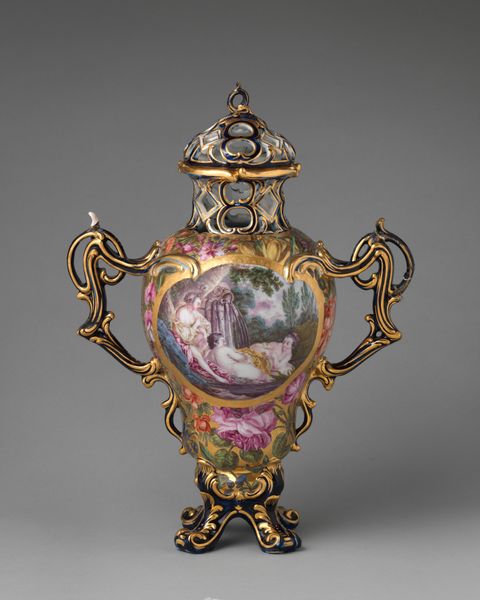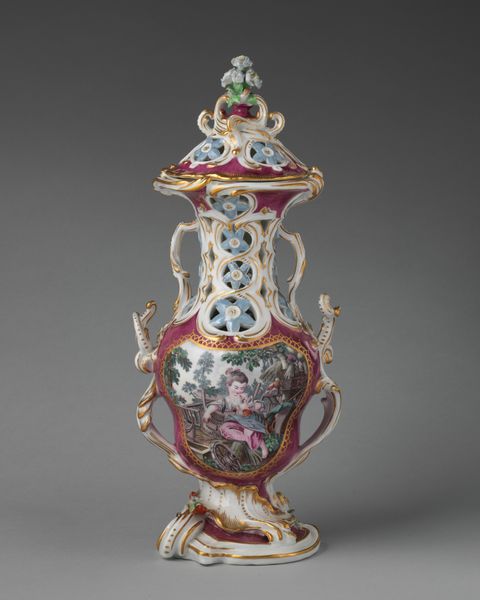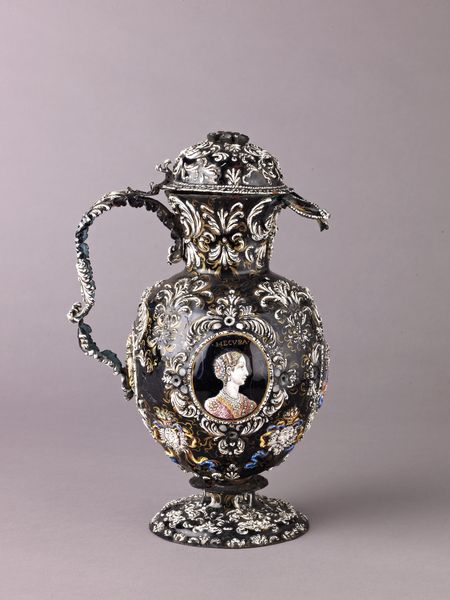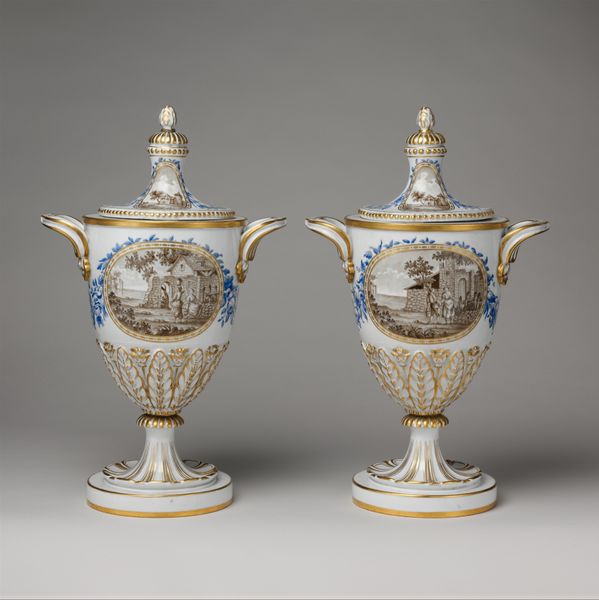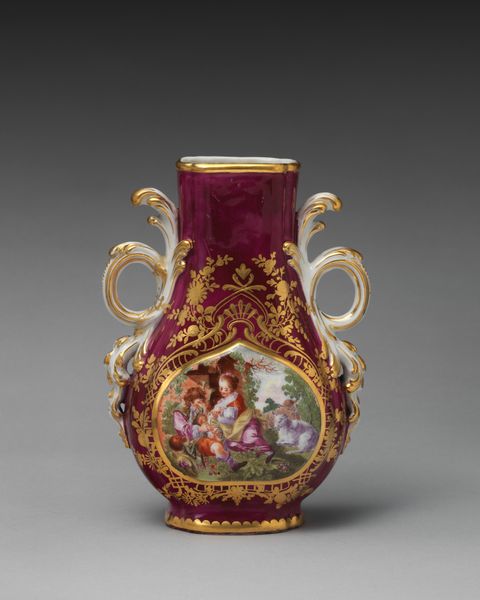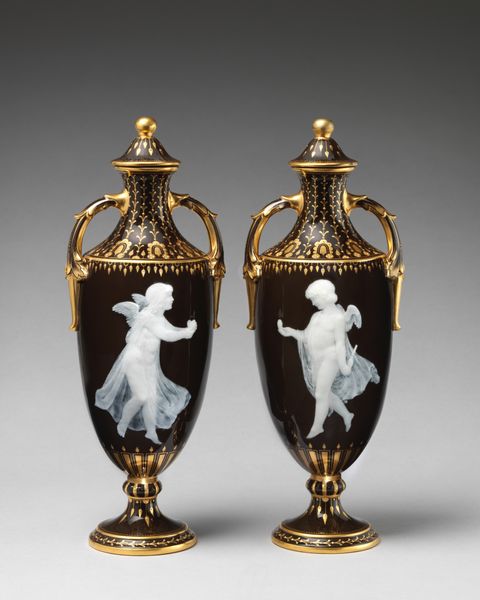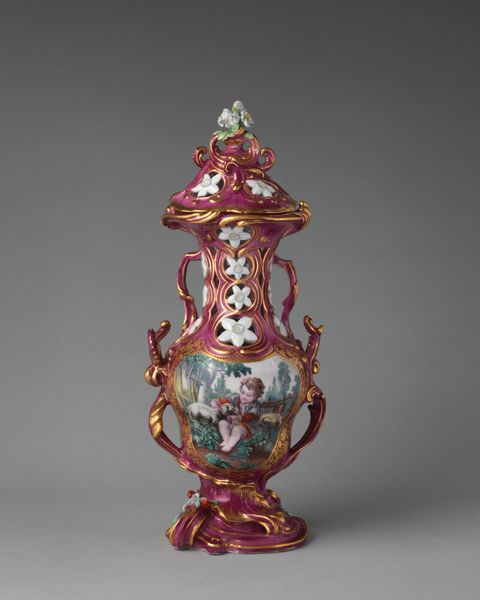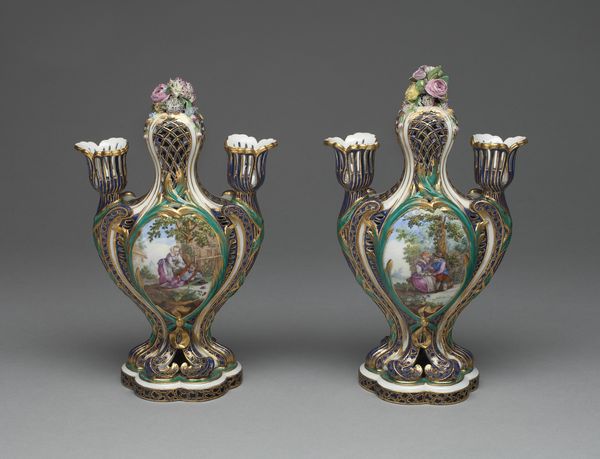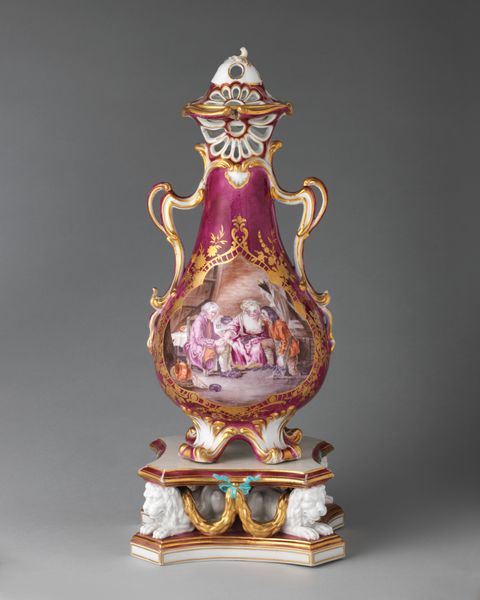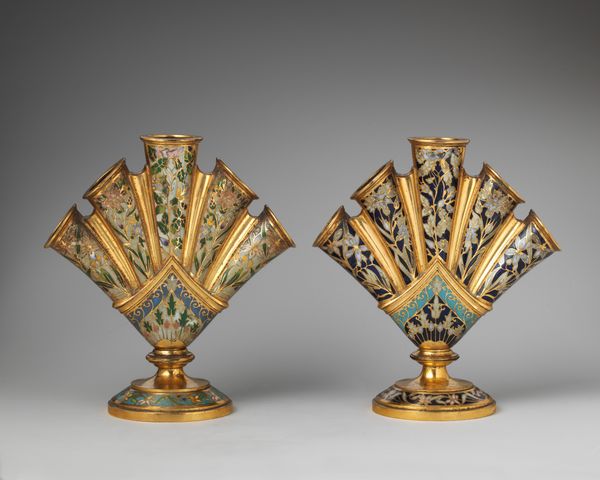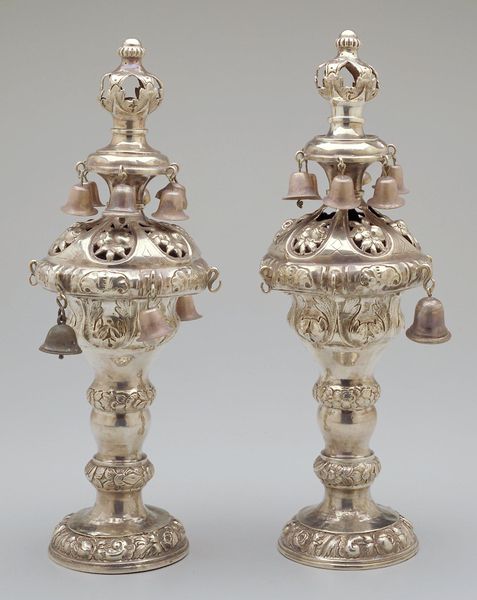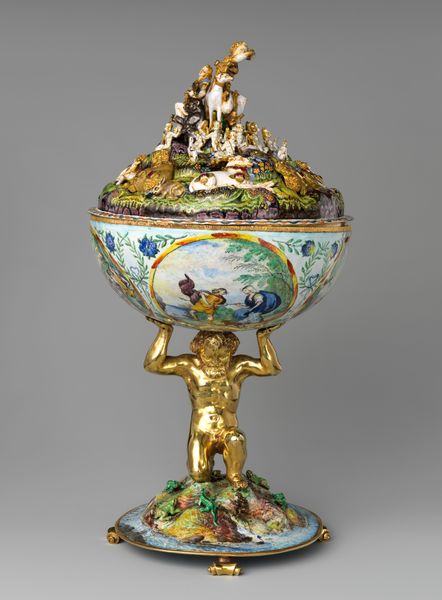
ceramic, porcelain, sculpture
#
animal
#
ceramic
#
porcelain
#
figuration
#
sculpture
#
men
#
genre-painting
#
decorative-art
#
rococo
Dimensions: Overall (confirmed): 23 1/2 × 12 5/8 × 9 in., 15.8 lb. (59.7 × 32.1 × 22.9 cm, 7.1 kg)
Copyright: Public Domain
Curator: So, here we have a pair of vases produced between 1757 and 1767 by the Chelsea Porcelain Manufactory. What's your first reaction? Editor: Opulence! Absolute, unadulterated opulence. It's like staring directly into the heart of 18th-century excess, with that deep cobalt blue, all that gold leaf swirling around… they're quite something. Curator: Indeed. The Rococo style is palpable, speaking volumes about the courtly culture of the period and, importantly, the class divisions made visible by this sort of expenditure. These objects were crafted as much to be beautiful as they were to signal social status. Editor: And those little genre paintings… scenes of leisure, right? They feel very disconnected from, say, the French Revolution just over the horizon. There’s a bubble-like quality here. I can almost feel the powdered wigs and the scent of expensive perfume wafting around. Curator: Precisely. The pastoral scenes, complete with figures lounging, feed into a wider aesthetic preoccupation with idealized country life—a kind of fantasy meant to deflect from the social unrest brewing at the time. Note the positioning of men within these landscapes, they reinforce gendered concepts of leisure and property ownership that are critical to consider. Editor: There’s something about the sheer skill of the porcelain work, though, that’s hard to dismiss. Someone poured an immense amount of time and energy into making these. Curator: Of course. Ceramic, porcelain, and sculpture have their place in eighteenth century studies, especially given the work environment and patronage system that gave way to art and object production during that time. Thinking critically about the labour is vital to discussions around class, economics, and industrial practices. Editor: It’s interesting how something so deliberately artificial and over-the-top can still provoke so many questions centuries later. They make me think about the human need for beauty, even amidst inequality and discomfort. It's a beautiful contradiction, don’t you think? Curator: Yes, precisely. It leaves you contemplating the role art plays, both as a symptom and a potential critique of its time. And hopefully prompting some critical reflection on contemporary parallels, too.
Comments
No comments
Be the first to comment and join the conversation on the ultimate creative platform.
